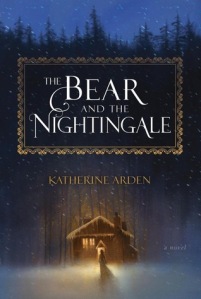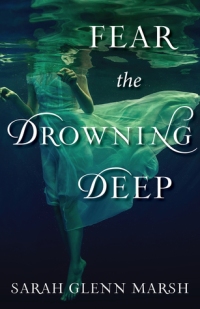 Book: “The X-Files Origins: Agent of Chaos” by Kami Garcia
Book: “The X-Files Origins: Agent of Chaos” by Kami Garcia
Publishing Info: Imprint, January 2017
Where Did I Get This Book: The library!
Book Description: How did Fox Mulder become a believer? How did Dana Scully become a skeptic? The X-Files Origins has the answers.
The X-Files Origins: Agent of Chaos explores the teen years of Fox Mulder, the beloved character depicted in the cult-favorite TV show The X-Files. His story is set in the spring of 1979, when serial murder, the occult, and government conspiracy were highlighted in the news.
The book will follow Mulder as he experiences life-changing events that set him on the path to becoming an FBI agent.
Review: When I was growing up, my family had three different Family TV nights as time went on. The first one was “Lois and Clark”. The last one, up until the end of high school, was “Buffy the Vampire Slayer”. And the middle one, the one that I have the fondest memories of, was “The X-Files”. I started watching “The X-Files” with my Dad when I was in fifth grade. I was both terrified and enthralled by it, and I loved both Fox Mulder and Dana Scully as they investigated the weird and unexplained happenings of potential supernatural malarky and/or government conspiracies with aliens. The revival last year was enough to keep me sated for a bit, though I was definitely left wanting more. And since it looked to be awhile before we were going to get more, imagine my delight when I found out that two books about teenaged Mulder and Scully were coming out. I started with the one about Mulder, “Agent of Chaos”, which was written by YA heavyweight Kami Garcia. I started with this one because while I’m probably more like Mulder, I have a deep, deep love for Scully, and want to savor her and save her for last. So off we go into teenage Mulder in 1979. It’s like “That 70s Show”, but far more insidious.
To give a bit more description than the one above: Fox Mulder, a seventeen year old living in Washington D.C., is still feeling the pain of his sister Samantha’s abduction from a few years prior. His family has been shattered, and he is trying to adjust to his new life with his Dad, as his Mom is still back on Martha’s Vineyard. His best friend Phoebe is back on the island, but he’s made a new friend in Gimble, the nerdy son of an unbalanced former Air Force Major. When children in the area start disappearing, Mulder is reminded of Samantha’s abduction, and decides that he and his friends need to try and solve this case. This was so wonderfully Mulder, convinced so deeply of something and so entrenched in his belief of it, that he would throw everything he has into trying to figure it out. I also appreciated that this harkened back to the greatest tragedy of Mulder’s life, the disappearance of his younger sister. Though we all know now what did end up happening to her (and while this truth is touched upon in this book ever so briefly), the sadness and pain revived right away, and quite effectively (side note: anyone who thinks that “Closure” is a sappy episode of “The X-Files” can seriously bite me). It was a pretty obvious idea to make Mulder’s story about Samantha at it’s heart, but at the same time Garcia did it in such a delicate way that it was masterful and touching.
We got to see some old favorites in this tale otuside of Mulder. While I kind of had a feeling that The Cigarette Smoking Man was going to make an appearance, because how could he not, I was very pleasantly surprised to see X, a ‘man in black’ and FBI operative from the series, play a fairly large role in this story as well. But along with these old characters, Garcia created some very fun new characters to act as foils for Mulder. The first is Gimble, Mulder’s best friend in D.C. who is a D & D playing Trekkie. Gimble served us some very appreciated, if not sometimes awkward, comic relief. But even he has a bit more tragedy to him, as his father is a mentally unbalanced man who believes in all kinds of conspiracy theories due to his former involvement with the Government. The Major, as he calls himself, was the weakest part for me in this book, as it seemed a bit too on the nose to have Mulder bond with a man who is both brilliant, and yet bogged down by lunacy and paranoia. Plus, it was just hard to watch The Major interact with Gimble, because MAN that has to be a hard way to grow up. Granted, the government conspiracy stuff was always my least favorite part about the show, so to have it kind of leak in here, while totally understandable, wasn’t really for me. But by far my favorite new character was Phoebe, Mulder’s best friend and sort of love interest. So sure, it’s clear that Mulder and Phoebe are not at all end game, given that his real true love is Scully. But I liked that Garcia took a risk and put a capable, smart, supportive yet no nonsense girl into this for Mulder to have as a foil. Because why couldn’t Mulder have two great loves of his life? Phoebe is the anchor that Mulder has always needed in his life, serving the Scully role and keeping him in check. Plus, her love of all things geek made her very relatable, and kind of refreshing. The girl’s first appearance has her hair done up in Princess Leia buns for God’s sake!
Overall this was a fun origin story that I think did justice to Fox Mulder. I can’t say if hardcore “X-Files” fans will like it, but this pretty big fan quite enjoyed the journey it took me on. I really can’t wait to read the one about teenage Dana Scully now.
Rating 8: A fun little origin story to give one of my favorite TV characters. Though I sometimes felt that parts of it were a bit too over the top, seeing Mulder, X, and The Cigarette Smoking Man doing things again was a delight, and reliving the sadness of Samantha Mulder was tragically beautiful.
Reader’s Advisory:
“The X-Files Origins: Agent of Chaos” is pretty new and not on any Goodreads lists. But I think it would fit in at “X-Files Related Books”, and “Government Agencies Dealing with Paranormal”.
Find “The X-Files Origins: Agent of Chaos” at your library using WorldCat!

 Movie: “Arrival”
Movie: “Arrival” 




 Book: “The Dark Days Club” by Alison Goodman
Book: “The Dark Days Club” by Alison Goodman

 Book: “The Bear and the Nightingale” by Katherine Arden
Book: “The Bear and the Nightingale” by Katherine Arden Book: “Fear the Drowning Deep” by Sarah Glenn Marsh
Book: “Fear the Drowning Deep” by Sarah Glenn Marsh


 Animorphs #1: “The Invasion”
Animorphs #1: “The Invasion” Book: “American Heiress: The Wild Saga of the Kidnapping, Crimes, and Trial of Patty Hearst” by Jeffrey Toobin
Book: “American Heiress: The Wild Saga of the Kidnapping, Crimes, and Trial of Patty Hearst” by Jeffrey Toobin Book: “Wondrous” by Travis M. Riddle
Book: “Wondrous” by Travis M. Riddle